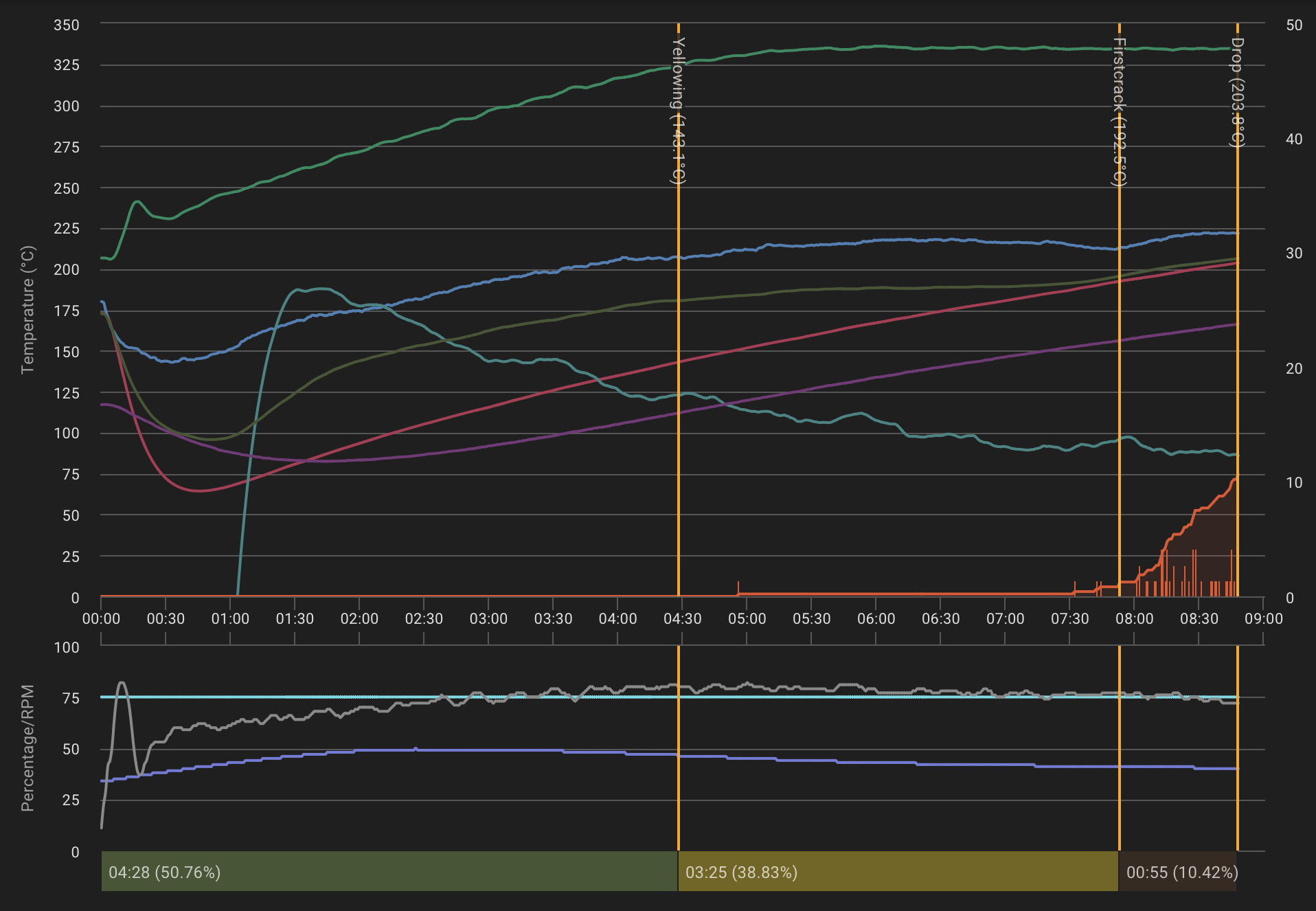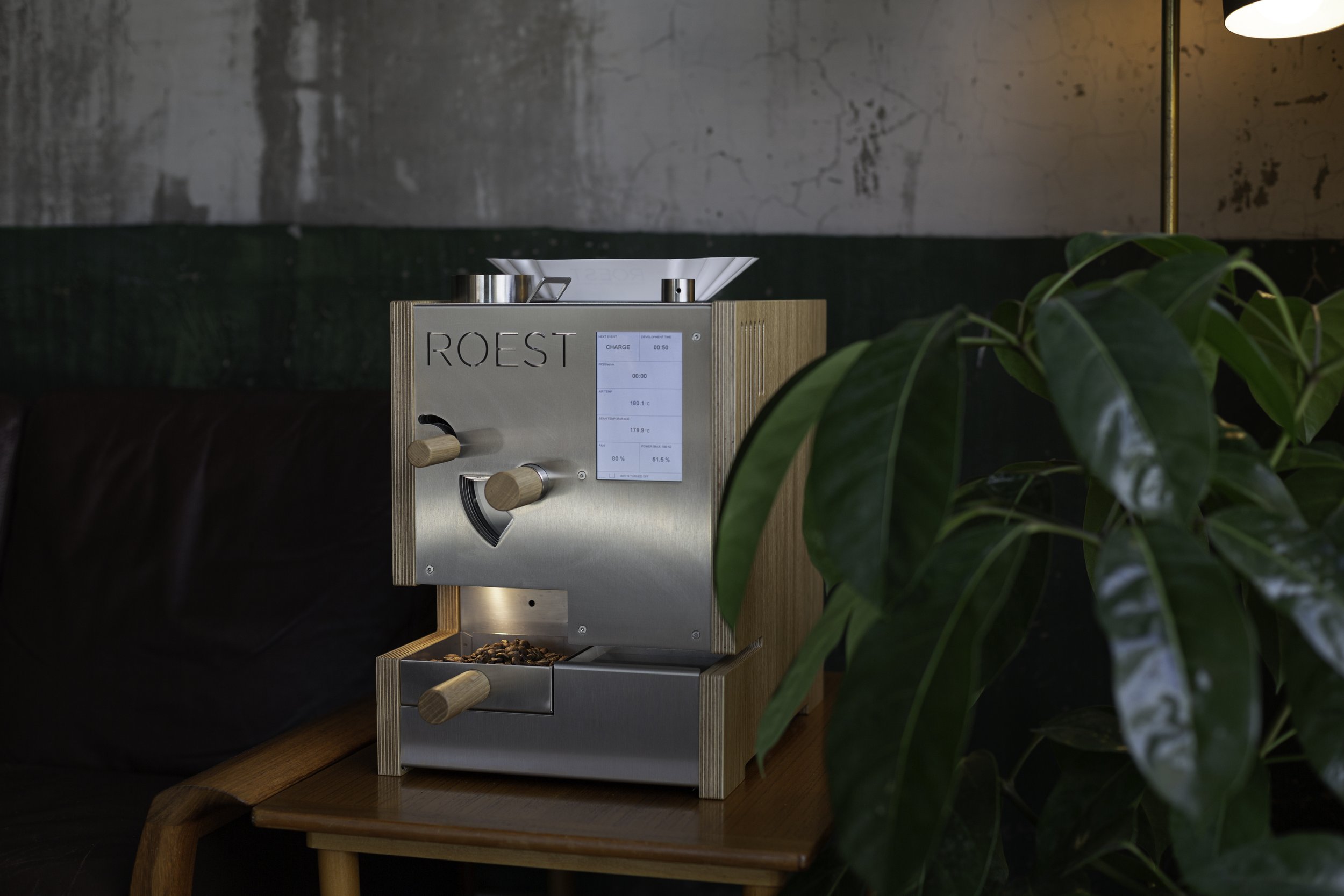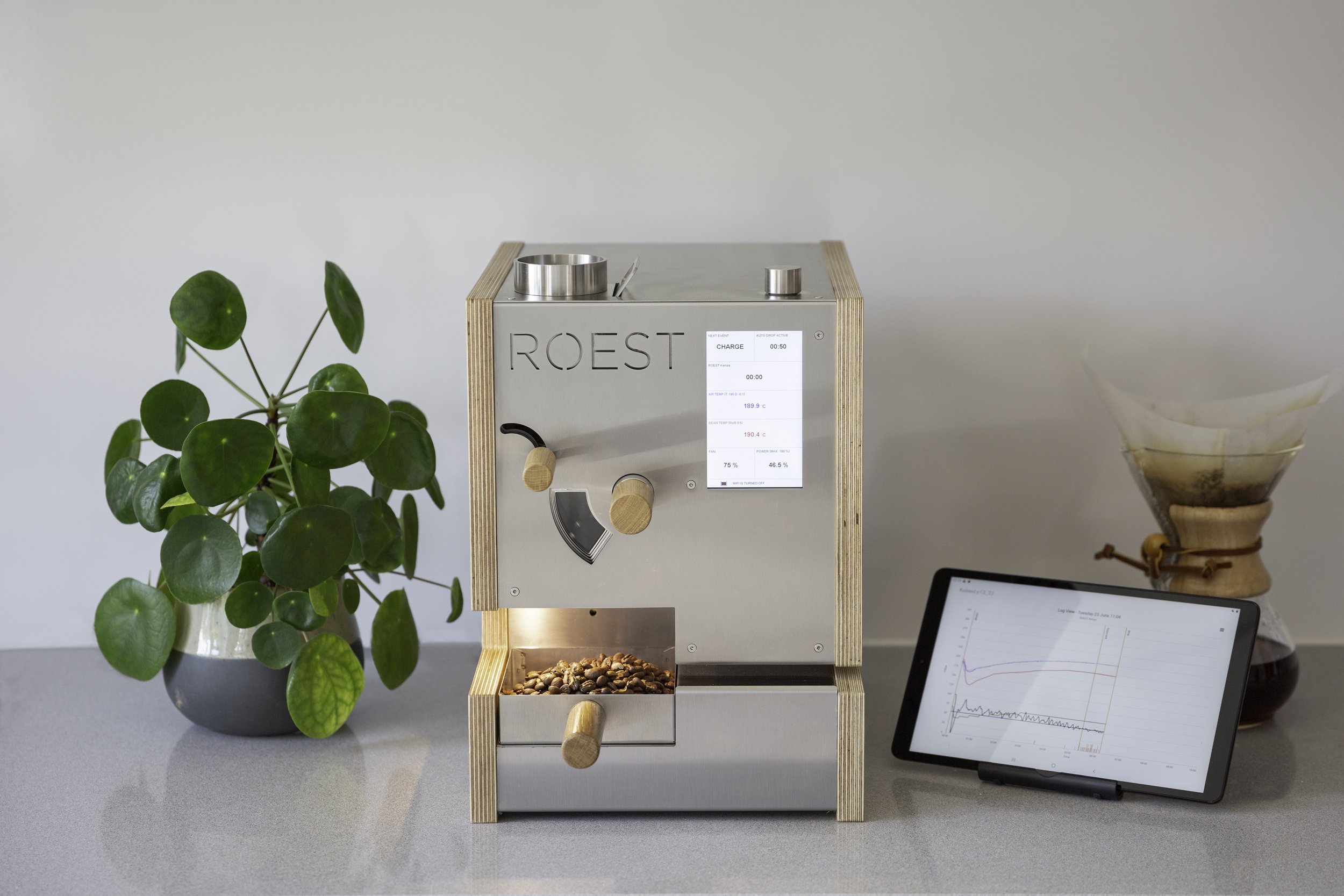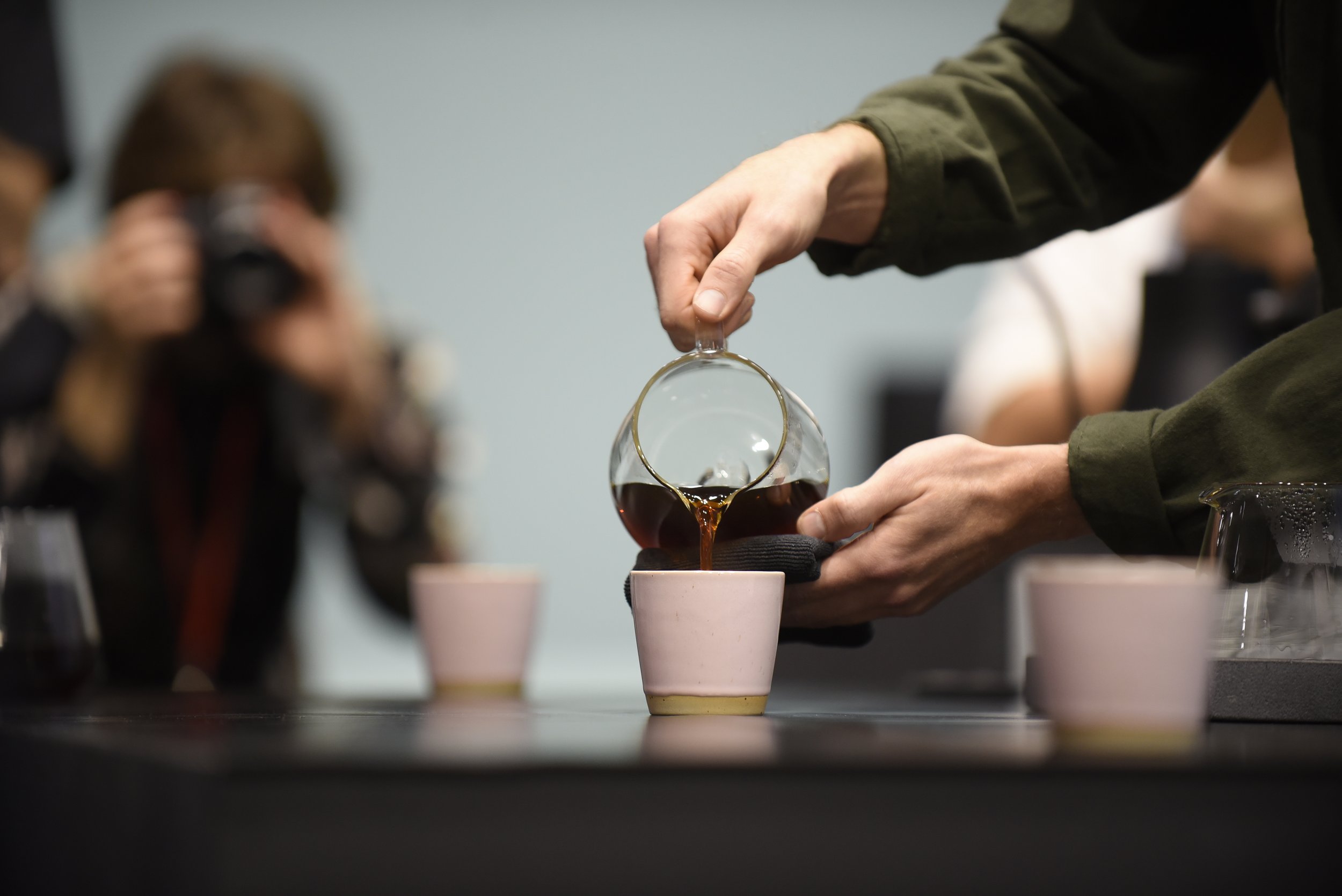
S100 Plus or L100 Plus - Finding the right Sample Roaster for you
So you’ve been eyeing the ROEST Sample Roasters for a while and find yourself wondering - should I get S100 Plus or L100 Plus? In this article, we’ll be breaking down information about both roasters and help you make a decision.
So you’ve been eyeing the ROEST Sample Roasters for a while and wondered - should I get S100 Plus or L100 Plus?
Deciding on which sample roaster to purchase can definitely be a confusing task. The models have their own distinctive designs and include both similar and different features. To choose the right one, you must ask yourself what’s more important.
In this article, we’ll break down information about both roasters and help you decide. And should you have any questions, feel free to contact us or read more about ROEST here.
Similarities
We must first look at the similarities to find the right sample roaster for you.
All ROEST Sample Roasters is a combination of two technologies: hot air roasters and conventional open drums - offering the best of both worlds! They have a batch capacity of 50 - 200 grams*, allowing you to experiment with smaller samples and produce less waste. The dual fan system for separate cooling allows you to roast back-to-back with no daily limit. Hence, both sample roasters contribute to a better workflow.
Sounds good so far? Very much. Now let’s move on to the most beloved features available to both S100 Plus and L100 Plus.
*Only S100 Plus and L100 Plus.
First Crack Detection
First Crack Detection is one of our most convenient features in both S100 Plus and L100 Plus.
This feature turns ROEST into a fully automated roaster that ensures each coffee reaches its full flavor potential regardless of skill. How is this possible?
The First Crack detector will identify individual cracks and register the First Crack event.
After the event is recorded, the roaster starts counting down the development stage and automatically releases roasted beans.
“One of the reasons I decided to get a ROEST machine was its automatic First Crack Detection function. This is because First Crack decides not only quality but also consistency.”
- Hidenori Izaki, 2014 Barista Champion
Consistency is essential when it comes to roasting the perfect batch. By collecting FC data, you will better understand what’s happening to the coffee and gain better control over the roast and the flavor profile.
For businesses roasting multiple batches per day, it is also an enormous help to save time, reduce workload and save money - all thanks to full automation with high-quality and consistent roasts. You can rely on automated technology to help you perfect your roasts without much attention and interaction.
Air Temperature
The air temperature measures the environment inside the drum and corresponds to the convective heat energy you have available. Changes to this temperature can affect the desired qualities of a roast, so predicting its behavior can help keep the temperature in control and prevent sudden changes.
Live view example with temperature sensors available on S100 Plus. Red graph = bean temperature, blue graph = air temperature, green graph = inlet temperature.
Bean Temperature
The bean temperature sensor is placed in the center of the roasting bean mass. By monitoring this temperature, you can find out what’s happening during your roast, why it’s happening, and when. It can be used to ensure that everything is going according to the plan.
Bean- and air temperature sensors are included in every ROEST model.
Inlet Temperature
An inlet temperature sensor monitors the temperature that comes from the heating element and goes into the roasting chamber. It can significantly improve the roasting compared to power profiles due to higher precision. This type of sensor is, therefore, a good improvement, or in addition, for those who mainly use power profiles when roasting on a ROEST sample roaster.
Inlet temperature sensor is included in ROEST S100 Plus and L100 Plus.
More Data
Christian Castricone, a home roaster based in Switzerland, is the owner of a S100 Sample Roaster. The S100 has been meeting all his needs, yet after owning the roaster for quite a while, he is ready to take it to the next step. “If I were to choose again, I would go for L100 Plus due to the added sensors that allow more data.”.
Basic or Plus model?
The difference between the Basic and Plus models (S100 vs. S100 Plus and vs. L100 Plus) is the added First Crack Detection feature. If you opt for a basic model, you will have to listen and register the First Crack event by using the touch screen. *See the table for all the differences.
Download detailed list of technical specs here.
Differences
Additional Temperature Sensors
The L100 Plus has two additional temperature sensors; drum- and exhaust temperature.
In short, the drum temperature is the internal temperature of the drum when beans are added. This temperature should be adjusted according to the green beans’ density, moisture content, processing method, variety, and batch size. Analyzing the drum temperature can help you achieve the perfect roast, as a higher temperature can scorch the beans, and a lower temperature can result in baked coffee. The drum temperature sensor is needed to get the most out of the Between Batch Protocol feature.
The exhaust temperature measures the heat energy in the airflow exiting the roasting chamber. More specifically, it is the remaining heat energy input in the roasting mass, and collecting this data will help you understand more of what’s happening with the heat transfer.
The live view on L100 Plus shows graphs of the two additional sensors - drum temperature and exhaust temperature.
The extra sensors provided in L100 Plus allow further tracking and data collection when roasting. This makes L100 Plus ideal for professional quality control or scientific research; for example, Hard Beans in Poland uses it for scientific research about green coffee storage, the Research University of Zurich for various research topics, and the COMA project is currently conducting coffee research in Mexico to enhance specialty coffee quality in their market.
Between Batch Protocol
The L100 Plus also has the full version of the BBP feature, which helps you to achieve the most consistent roasts.
Between Batch Protocol is a way to reset the thermal energy in your roaster between batches. By using this profile on your ROEST Sample Roaster, you will have the same starting conditions as you had on your previous batch. When sample roasting, your main goal is to achieve the most consistent result on every batch. Using BBP with your chosen profile makes it more likely to get that.
Cooling Tray Warning
Thanks to the dual fan system in both models, you have the ability to roast back-to-back - meaning there are seconds in between each roast. How does it work? When the roast is finished and drops in the cooling tray, you simply charge a new batch while the previous is cooling down.
Now, this is where the Cooling tray warning comes in handy. This is a sensor that is only included in the L100 Plus model and alerts users to remove beans from the cooling tray. When operating a fully automated roaster, you might find yourself too focused on other important tasks of your job. Therefore, the sensor is beneficial as the machine will remind you to remove the coffee, in order to avoid mixing two batches.
Wood VS. Aluminum
Do you prefer the ultimate Scandinavian look with wood panels or the sleek and seductive black aluminum?
It might be tempting to choose based on the style. However, on L100 Plus you can choose between an aluminum design and heat-resistant PTFE handles, or go for the full Scandinavian style with wooden panels. So in terms of panels, you will need to ask yourself - where will I place the Sample Roaster while roasting? And most importantly, does the wooden/aluminum model include the features I require?
What’s the Verdict?
Both sample roasters provide you with plenty of roasting data: environmental and bean temperature, rate of rise, main motor speed, airflow, power, crack rate, and more. They can both roast automatically or with an advanced manual mode and help you improve roasting skills and coffee quality.
In the end, you’ll have to look at the differences and decide if additional sensors or aluminum panels will be needed for your business. It is crucial to determine what you want from your sample roaster in order to not overspend on features you won’t use or, conversely, miss out on valuable data that could help you.
If you do not intend to use drum temperature, exhaust temperature, or cooling tray warning, then S100 Plus will be enough to satisfy your sample roasting needs. On the other hand, if you’ve been wanting to collect more data and take your roasting to another level, then L100 Plus is a better choice. With extra sensors and more data to collect, L100 Plus has quickly become a preferred sample roaster for coffee professionals and scientific researchers.
-
We hope this article will help you make a final decision. If you’re still in doubt, do not hesitate to reach out to us by filling out a quotation form. We will get back to you with more information about the sample roasters and answer any questions you might have.
Wonder exactly how ROEST can help your business? Then check out these 5 reasons why.
Benefits to roasting coffee at home
What are the benefits of roasting at home with ROEST? Check them out to see if the ROESTing lifestyle is for you!
If you’re reading this blog, then we assume you are a coffee lover interested in roasting your very own coffee from the comfort of your own home. You might have questions such as - is roasting coffee at home worth it? Should I get a small capacity roaster? Will it be challenging? Well, you are not alone! Home roasting has become increasingly popular in recent years, and we have received plenty of questions about this topic. So here’s a blog for the ones considering roasting at home.
Check out the benefits of roasting your own coffee to see if the home roasting lifestyle is for you!
Fresh coffee ready within 10 minutes
Whether you are trying to perfect your roasting skills or preparing delicious batches for the week - we’re guessing you would like the sessions to be fast and effective. Who wouldn’t? With a small capacity digital roaster you’ll have your beans ready and roasted within 10 minutes!
The freshest coffee experience
The roasting time with ROEST takes about 6-7 minutes, depending on the coffee.
Expand your horizons
By roasting your own coffee, you will also get a better understanding of the coffee beans - where they’re from, base flavors and what it went through before reaching your cup. The variety of coffee is incredibly huge, and there’s no end to exploring and experimenting. Roasting at home will without doubt expand your coffee horizons.
“
It's been 6 months with my ROEST Sample Roaster and I still learn more and more about coffee each time.
Majed Altamami, Home Roaster
Your coffee - just the way you like it
Roasting coffee at home allows you to source your own green beans and roast it exactly the way you prefer. Want it light, medium, dark, or anything in between? You decide!
Just a warning, once you get used to drinking your own roasted coffee just the way you like it - it’ll be hard to go back to anything else!
But what if you just started your roasting journey, and you’re not sure where to begin? With the new era of digital coffee roasters comes the perks of creating, sharing and downloading profiles. In other words, you can easily improve your skills by trying out various roasting profiles created by coffee professionals around the world. You’ll find yourself getting the hang of it and start tweaking and creating your own! By then, you can share your profiles and get feedback from fellow roasters.
ROEST provides an online library of roasting profiles made by baristas, importers, producers and well-known coffee experts such as Tim Wendelboe and Matt Winton. If you decide to become a part of the ROEST family - feel free to share your own profiles in the library, explore others and use the forum for questions and discussions!
“
ROEST got the perfect batch size to play around with different roast-profiles, and they’re super easy to install.
Stephan Brückmann, Roaster at Kaffeerosterei Baum Leer
Active coffee roasting community
You might have already noticed that the roasting community is very, very active. This is incredibly helpful if you just started roasting at home and want to learn from others.
We recommend using forums such as Homeroasters and Home-Barista to share ideas and discuss various roasting topics. You can also follow other roasters on social media for inspiration. And if you feel like sharing your own coffee journey, we’re sure that would be much appreciated. We can all learn from each other!
Forum and workshops
At ROEST we have a forum with more than 400 members and ROEST owners. A great place to meet new people and talk about anything coffee- and roasting related. We also have tutorials, interviews and live ROEST workshops on our YouTube Channel.
Rise of digital roasters for home usage
There has been an incredible rise of digital roasters the last couple of years. So whether you’re feeling creative and in the mood to experiment, or just want to prepare your coffee for the week - there are now roasters available for every need. The options are plenty, and the choice is yours!
If you want to delve deeper into the art and science of coffee roasting, and have full control over roasting variables - then we suggest getting a roaster that allows manual control. Others who want freshly roasted coffee with a click of a button might want to opt for a fully automatic roaster. Ask yourself what you think is most important, what you want out of your home roasting experience, and choose a roaster that suits your needs.
There are many roasters designed for sample roasting, meaning smaller batches, which is especially practical for home roasters.
ROEST is a wonderful option for those who want the best of both worlds. Simply stick to automatic roasting, or take your home roasting to another level by experimenting manually. It allows you to adjust parameters such as temperature, power, drum RPM, development time and more, to obtain your desired flavor profile. The learning curve might be steep at the start, but as Matt Winton, WBrC Champion 2021 said: “You just keep on learning. It’s very intuitive.”.
It’s FUN
Saving the best for last. Roasting at home is so much fun! From learning the steps, to roasting your very own coffee, and enjoying it at home - it’s an incredibly exciting and rewarding experience.
Sharing is caring
Perhaps you want to share this wonderful experience with others. Serve your amazing coffee to family and friends when they visit. Now that’s a way to impress. Certainly for us coffee lovers!
Home roasting might seem like a daunting step, but it can be surprisingly simple – not to mention fun. It is for you to decide whether you want to experiment and perfect your roasting skills, or just roast automatically to create an amazing cup of morning coffee! Maybe a little bit of both?
In the end, roasting at home is for those who value freshness and flavor, and have the passion to improve their coffee knowledge and roasting skills!
How Matt Winton prepared his winning coffee at the World Brewers Cup
Matt Winton earned the title of 2021 World Brewers Cup Champion with his exceptional blend of Catucai and Eugenioides. We spoke to Matt about his competition coffee: how it was prepared, the roasting process and blending, use of Eugenioides and the importance of water.
Matt Winton earned the title of 2021 World Brewers Cup Champion with his exceptional blend of Catucai and Eugenioides.
The Australian barista who now lives in Zurich, has previously won the Swiss Brewers Cup Championship and the Swedish Barista Championship - twice! After the World Stage in 2021, he could now add another title to the list.
After months of practice and preparations together with his team, they achieved a final blend that took the World Stage by storm. Their competition coffee consisted of a rare species called Eugenioides, which turned out to be a talking point of the show used by no less than three National Champions. This parent varietal of Arabica, noted for its intense sweetness and almost no perceived bitterness, was blended together with Catucai.
We spoke to Matt about his competition coffee: how it was prepared, the roasting process and blending, use of Eugenioides and the importance of water.
A wonderful performance and approach by Matt. Photo: Specialty PaL.
How did you start creating this coffee blend?
When I was looking at the blend, I looked at how each part of the blend fit in. I thought of it like in a musical way - we had the base which was this heavy body sweetness, not too much acidity, or in the Eugenioides’ case, no acidity, which provided the structure of the blend. Then we add on top whatever else was missing. Essentially, you could fill out the rest of the cup with the high notes - and that could be anything.
We chose the Catucai because it was so unique on its own. It has this strange herbal like taste of a very high quality. Reminding me of a verbena tea, rosemary or lemongrass. The cup was also really minty and had very light bright flavors. The acidities in that cup were next level - sparkling, vibrant and complex.
“The Eugenioides roasted with the ROEST ended up being mostly very fruity. We didn’t find that in some other roasters’ expressions of the coffee which is really interesting. ”
How was it like roasting these unique coffees?
Surprisingly, both of those coffees roasted really easily. We roasted the Catucai to have as much expressive acidity as possible. It was like - forget body in that coffee, just go for all of the high notes. We would roast the Catucai to have all of this top end of the brew, leaving the rest of that space to be filled by the Eugenioides.
We actually ended up using a few different roast profiles of Eugenioides to give different characters to the coffee, and some different lots of the Eugenioides as well. It wasn't as straightforward as just having Eugenioides and Catucai, but by blending different roast profiles - some that had more flavor intensity, some that had less flavor intensity and some that were more funky. It created this really complex synergy in the cup.
The Eugenioides roasted with the ROEST ended up being mostly very fruity. We didn't find that in some other roasters’ expressions of the coffee which is really interesting. So I guess it might also be the way that I roast, giving a lot of energy and then sort of letting it taper off quite quickly. It was very interesting to see the inherent taste differences roasted in a roaster.
The blend of Catucai and Eugenioides was roasted on the ROEST Sample Roaster.
Any tips on how to create a coffee blend? And how did you blend yours?
The amount of times where I've had exceptional blends, I just threw them together - a bit of this, bit of that, ground at the same setting, and brewed.
It's about throwing it together and seeing what happens. Surprisingly, I had to use more Eugenioides to make the Catucai shine. The sweetness of the Eugenioides got to carry the other flavors more. It's not always straightforward but more of a trial and error. It was a good learning experience for me.
Do you think we are going to see more Eugenioides on the World Stage from now on?
I’m sure we will. When the top three baristas use Eugenioides it sets a precedence that it's good. Even if you don't like it you have to value it, because it scored so highly. Personally, I don't like the taste of Eugenioides that much as a brew, but I think it's incredible to blend with. It can provide this amazing base - anything you add on top just shines. So it's really cool and almost any coffee works with it in a blend. You take anything you want - it just makes it better.
In action, first round of the WBrC. Photo: Specialty PaL.
Why is water so important in coffee? How can it influence the flavors or attributes?
Water is everything - it's 98.6% of this brew. If you haven't tried different waters like tap water, bottled water or filtered water - do it! You'll see there is a huge difference, especially if you have a bad tap water. Basically, the water itself can be huge in terms of the impact on not only the extraction, but the taste of the water.
The water that I had for the world stage was just yummy. It had this sweetness and crispy finish. We created six different waters in total. I brewed three V60s following the same recipes with a different water in each brew. The result was super interesting even though the differences in the minerals and concentration wasn't significant. We tested different types of magnesium, calcium and bicarb.
The other base water that we ended up using was the Lauretana water. It's a very low PPM water from Italy that sits at around 14 PPM. We tested it with the blend and the difference was huge. It was either a delicious cup or a disgusting cup.
Even on the day of the competition, we brewed the blend to see how it tastes and the water had “died”. It was just flat and I couldn't use it. So even the water being 24 hours old just didn't work. We had to re-make it that morning. It was really crazy.
Was it your best cup of coffee that you've ever had?
It's so hard to think about the best cup of coffee. It was probably the best cup of coffee I’ve ever served. All three of those cups on that finals day were the next level. It was like a jasmine syrup in the end, so sweet, floral - we'd never had these strong notes of jasmine before.
Yeah, it was probably the best cup of coffee I’ve ever served.
Matt Winton together with his teammates, Sam Corra and Tom Balerin. Photo: Specialty PaL.
A big thanks to Matt. Your experience and process inspires us! Well done and good luck on your next adventures - we’ll be rooting for you as always.
Read more about why he decided to roast his winning coffee on ROEST:




















